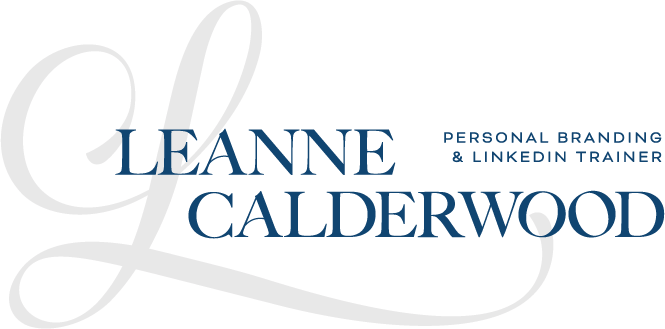There's a common adage that's been making the rounds in the business world for years:…

Reframing the Game: Navigating the Terrain of B2B Cold Calling Successfully
Have you ever pondered why cold calling, despite its reputation, remains one of the most vital sales strategies in the business-to-business (B2B) landscape? Yes, you read it right.
Cold calling is not extinct! Instead, it has evolved to be more strategy-oriented, and less of a numbers game. Let’s debunk myths around cold calling, highlight its pros and cons, provide tips to enhance your interactions, and discuss challenges you may have to tackle.
Cold Calling as a Sales Strategy
In an age where digital communication channels are at the forefront, it’s easy to dismiss cold calling as an archaic technique. However, cold calling remains a robust sales strategy in the B2B landscape, primarily because it creates a direct line of communication with your prospects. This swift, straightforward approach often translates into immediate feedback, thereby allowing sales reps to adapt their approach in real time.
The Unavoidable Reality of Cold Calling in B2B
Cold calling, for all its perceived drawbacks, has a few undeniable advantages. The most significant is the direct, immediate contact you establish with potential clients. You’re not waiting for someone to find your website, or hoping they read that carefully crafted email. You control the dialogue, which can lead to immediate results.
Additionally, cold calling aids in expanding your network, fostering relationship-building with clients you might not have reached otherwise. It’s a tool to break into new markets or demographics that you haven’t touched before.
However, cold calling does have its cons. It’s often viewed as intrusive and can potentially harm your brand’s reputation if not done correctly. Moreover, it can be time-consuming, with a low success rate if not done strategically.
Navigating the Challenges of Cold Calling
Challenge #1 – The Fear of Rejection – The biggest challenge of cold calling is handling rejection. Remember, it’s not personal. Developing a thick skin and maintaining your focus on long-term gains is crucial.
Challenge #2 – Who’s Who in the Zoo – Another challenge is reaching the right person. In B2B cold calling, decision-makers are often shielded by gatekeepers. To overcome this, aim to build relationships with these gatekeepers.
Challenge #3 – Staying in Compliance – Ensuring legal compliance can be tricky. Different countries have different laws related to cold calling. Familiarize yourself with these laws to avoid potential legal issues.
Let’s Embrace Cold Calling with a Fresh Mindset
Cold calling isn’t for the faint-hearted, but when used correctly, it can be a powerful tool in your sales arsenal. By approaching it strategically, personalizing your pitches, investing in training, and learning to navigate the inherent challenges, you can turn cold calling into a rewarding part of your B2B sales strategy.
Remember, your ability to evolve and adapt will set you apart from your competition. Change the narrative of cold calling and use it as a platform to showcase your unique value proposition.
Fine-Tuning Your Cold Call Approach: Advanced Tips for Success
While the basic tenets of cold calling revolve around research, personalization, and timing, there’s a lot more depth to these elements. For those looking to truly excel in the art of cold calling, here’s a more comprehensive breakdown:
- Deep Dive Research: It’s not just about knowing the company and the industry. Go a step further. Familiarize yourself with recent company news, any recent challenges they might have faced, and their achievements. This will allow you to bring up relevant topics that show you’ve really done your homework.
- Master Your Opening: The first 15 seconds of your call determine whether the other party stays on the line or disconnects. Instead of diving right into a pitch, try asking a relevant question based on your research. For instance, “I noticed your company recently expanded into the European market, how has the transition been?” This serves as an engaging conversation starter and can lead into your pitch naturally.
- Listen Actively: While you might have a script or key points to cover, ensure you’re listening to the prospect. Active listening can guide the direction of the conversation, making it more relevant and engaging for the other party.
- Address Objections Head-On: Anticipate potential objections and address them proactively. If you’re selling a service and believe cost might be an objection, mention how your service can provide long-term savings or increased ROI.
- Humanize the Conversation: Remember, there’s another human being on the other end of the line. Share a brief personal anecdote if relevant or find common ground to make the conversation more relaxed and relatable.
- Use Positive Language: Instead of saying, “I’m not sure,” say, “Let me find that out for you.” This not only portrays confidence but also shows your commitment to assisting the prospect.
- Follow Up Tactfully: If the conversation went well but didn’t conclude with a definite outcome, ensure you follow up. This could be in the form of a thank-you email, a brief recap of the discussion, or providing additional resources they might find useful.
- Continuous Learning: The landscape of industries is continually changing. Regularly update your knowledge, not only about the prospect’s industry but also about best practices in cold calling and communication.
- Rejection Management: Not every call will turn into a success story. Learn from rejections. If possible, at the end of a call that didn’t go well, politely ask for feedback. It might provide insights for improvement.
Ready to embrace cold-calling as one of the tools in your sales toolkit? Leanne assists hotel and destination teams with their sales approach, which includes tips on what would resonate with your client (and what can fall flat). Reach out to Leanne to learn more.
RELATED – What is Social Selling or Relationship Selling?
RELATED – Inbound Marketing For the Hospitality Industry
RELATED – How to Build Your Personal Brand on LinkedIn As a Sales Professional
RELATED – 5 Ways to Use LinkedIn As a Sales Tool



